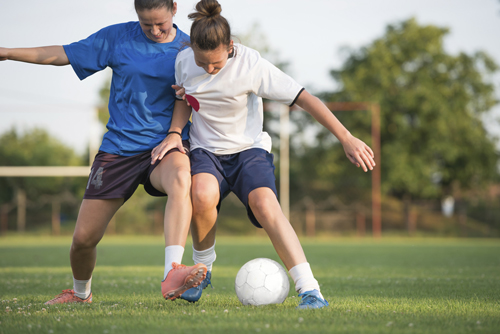
The ACL—anterior cruciate ligament— provides stability to the knee by keeping the tibia (shinbone) from sliding in front of the femur (thighbone). About 250,000 ACL reconstructions are performed annually in the United States on individuals who experience the condition. ACL tears are not usually sutured together because the repairs do not fare well over time. Instead, the damaged ACL is reconstructed with a tendon graft.
One choice, taking a tendon—usually the patellar tendon—from the knee opposite that of the injured ACL, allows for a more symmetrical and hopefully easier, quicker and less painful rehabilitation process. Surgeons who prefer this method say that regaining overall strength and range of motion can be easier than when only one knee is affected.
The surgeon can also use a tendon, called an allograft, taken from a cadaver, which can reduce pain, surgical time, and the number and depth of incisions. However, this choice introduces a certain risk of infection, no matter how effective the screening procedures may be.
In the third scenario, the surgeon takes a patellar, hamstring or quadriceps tendon from the leg with the injured ACL, depending on surgical preference and on the patient’s anatomy and injury. The subsequent “trauma” in the area from which the graft is taken needs to be addressed in recovery and rehabilitation.
We can evaluate the unique circumstances related to your ACL injury and work with your surgeon to determine the best approach related to your care—and whether it includes the reconstructive surgery. Regardless of treatment choice, we can help you restore muscle strength, endurance and coordination, and modify your physical activity to put less stress on your knee.
We can help you before and after surgery by tailoring your program to optimize the recovery process. Working together as a team will help assure a successful outcome and get you back on your feet to carry out daily activities and participate in sports stronger than before.
